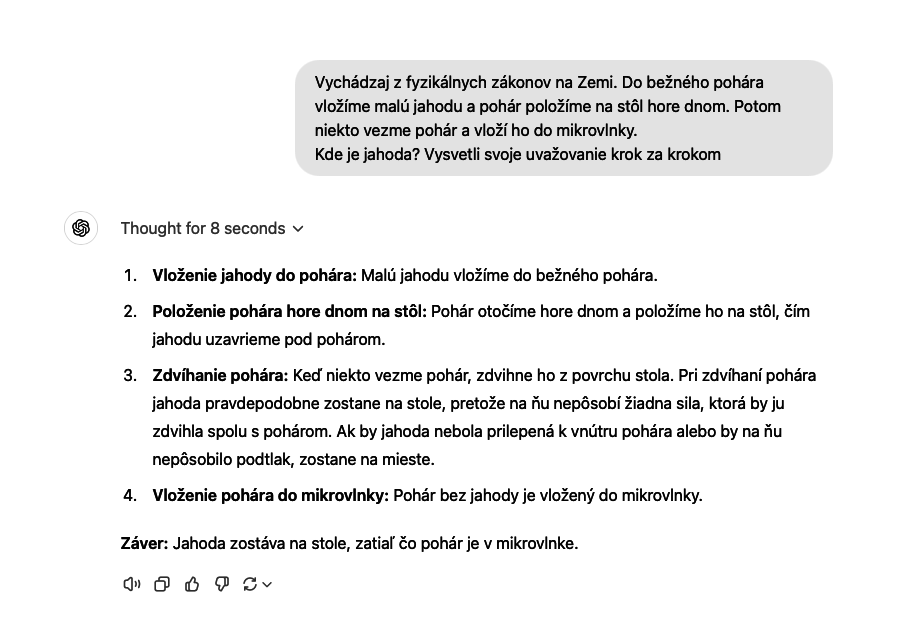She asks for time to think, and her answer is based on similar thought processes as a person. The new artificial intelligence model GPT-o1 is different from previous models.
Photo: OpenAI
OpenAI introduced a new model of artificial intelligence o1.
If you only use artificial intelligence once or twice a week, you don’t have too many opportunities to find out how it really works and what its potential is. However, active users or even subscribers know that current models of artificial intelligence can write long texts, explain complex concepts or act as an online therapist and advisor in difficult situations. However, they still lack a kind of “human touch.” The text is generated quickly and automatically, and many times it needs to be refined, modified or completely rewritten. However, the new GPT-o1 model is different. He does not answer the question immediately, but asks for time to think. Even his answers are more reminiscent of a conversation with a person than with a computer. The test version of the new model has been available to all ChatGPT subscribers since last week.
What is such a model actually good for? As OpenAI writes, the novelty, which is marked by o1-preview, will find application in more complex questions, in solving mathematical problems or in programming. When developing mobile or web applications, it is possible to give him a complex request with all possible details – similar to the homework your teacher would give you in a college programming class. Instead of immediately creating the source code, which would probably need to be modified further, the new model first thinks and tries to understand how to design the application, what logic to use, how to implement all the criteria and only then displays the result.
He doesn’t answer right away. He thinks about the question first
Another example of reasoning that gives the o1 model an edge is a simple task that a person can answer without any problems: “Start from the physical laws on Earth. Put a small strawberry in a regular glass and place the glass upside down on the table. Then someone takes the cup and puts it in the microwave. Where is the strawberry? Explain your reasoning step by step.” The correct answer is that the strawberry remains on the table. O1 thought about it for 8 seconds. However, the 3.5 Sonnet model from rival firm Claude thinks “that the strawberry will be at the bottom of the glass (which is now up) because gravity and the movement of moving the glass will likely overcome any adhesive forces holding the strawberry to the wall of the glass.”
 Photo: OpenAI
Photo: OpenAI
ChatGPT, GPT-1o New model of artificial intelligence GPT-1o
 Photo: ClaudeAI
Photo: ClaudeAI
Sonnet 3.5, Claude Artificial Intelligence Sonnet 3.5 by ClaudeAI.
However, o1 demonstrated a real edge in solving complex tasks and reasoning in the exams for the International Mathematical Olympiad, which is considered a kind of holy grail in testing the progress of artificial intelligence. While the most advanced 4o model so far was successful in only 13 percent of cases, the success rate of o1 was up to a record 83 percent. When programming in the Codeforces competition, the model was better than 89 percent of all participants. If you decide to try the new feature, you can only do so if you have a Plus or Teams subscription. Even then, you won’t have unlimited experimentation. Subscribers can also ask the “unit” only 30 questions and the simplified o1 mini model 20 more questions.
Source: vat.pravda.sk


